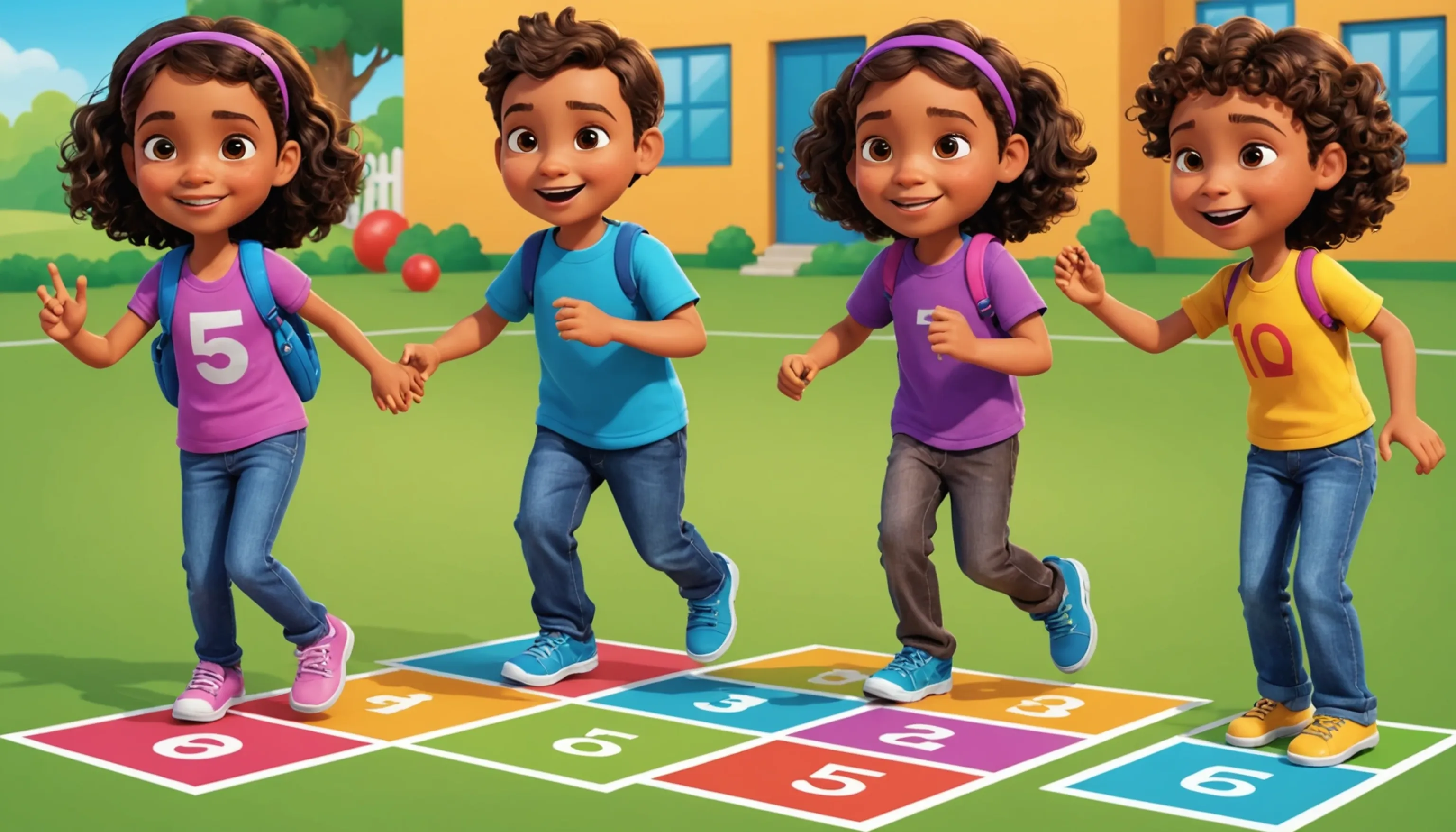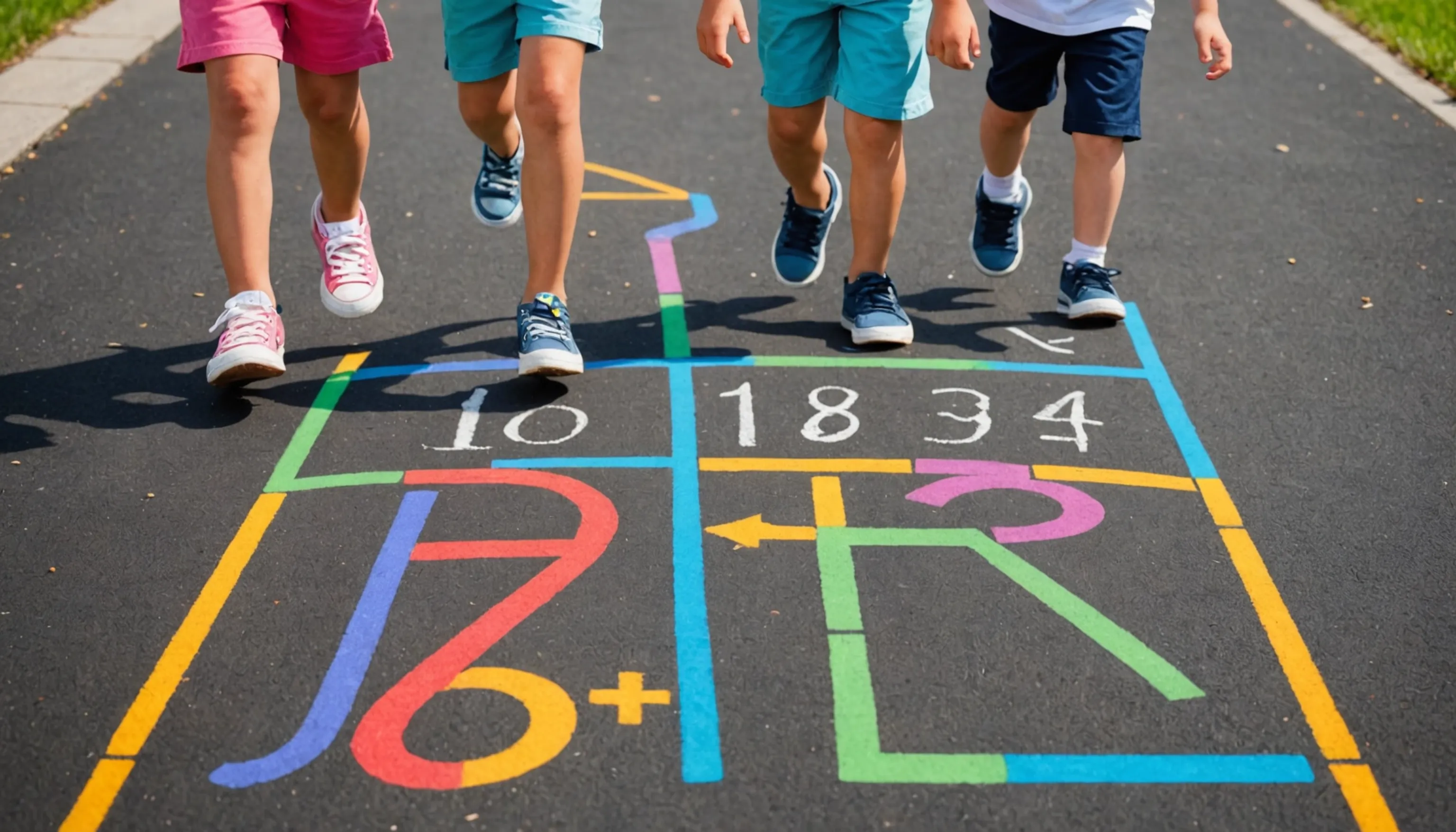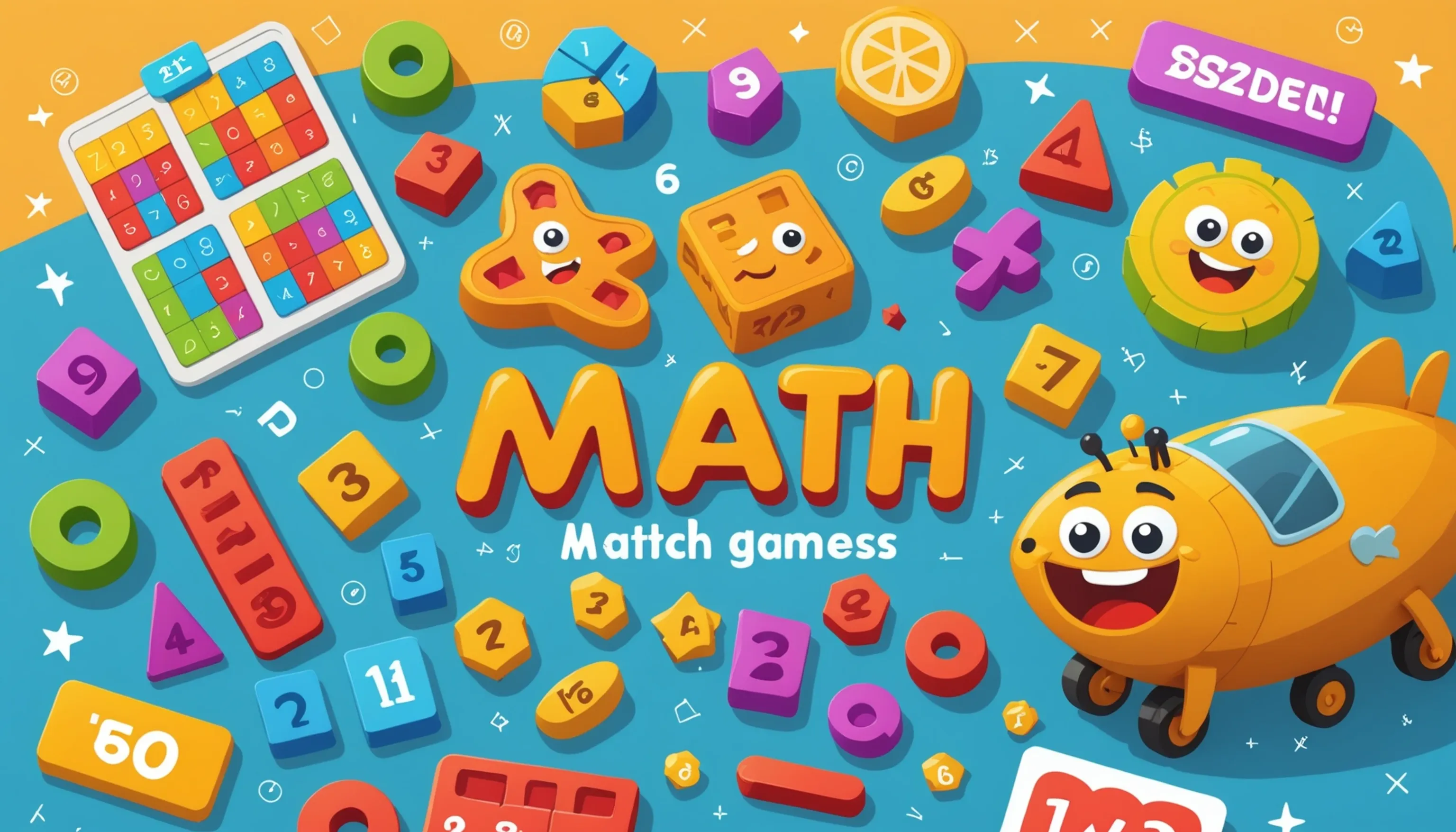5 Math Games for Young Kids
 HvWHenry van Wagenberg
HvWHenry van Wagenberg
5 Fun Math Games for Young Kids
Engaging young kids in math can be a fun experience with these 5 fun math games. Each game is designed to enhance math skills while keeping children entertained.
1. Math Bingo - Create bingo cards with numbers and call out math problems to solve.
2. Number Line Hopscotch - Use chalk to draw a number line and have kids hop to the correct answer.
3. Math Scavenger Hunt - Set up clues that involve solving math problems to find hidden treasures.
4. Shape Sorting Race - Race to sort shapes into the correct categories.
5. Addition and Subtraction War - Use playing cards to create a fun game where kids compete to solve addition or subtraction problems.
Game 1: Math Bingo
Math Bingo is an exciting twist on the classic bingo game that can help young kids improve their math skills while having fun. To play, create bingo cards that feature numbers arranged in a grid format. You can customize the cards by including numbers that correspond to specific math problems, such as addition or subtraction.
Here's how to set it up:
- Create the Bingo Cards: Make several cards with a mix of numbers. You can use a 5x5 grid and fill it with random numbers from 1 to 25, or customize it based on the math concepts you want to reinforce.
- Prepare Math Problems: Write down math problems on separate pieces of paper. For instance, you can create problems like "3 + 2" or "5 - 1." The answers to these problems should match the numbers on the bingo cards.
- Call Out the Problems: As the game host, read the math problems aloud. Players must solve the problems and mark the corresponding answer on their bingo cards.
- Winning the Game: The first player to mark a complete row, column, or diagonal shouts "Bingo!" and wins the game.
Math Bingo not only makes learning fun but also helps children practice their arithmetic skills in a playful environment. It encourages friendly competition and can be adapted for various age groups.

Game 2: Number Line Hopscotch
Number Line Hopscotch is a dynamic game that combines physical activity with math practice, making it perfect for young kids. This game not only helps children understand number sequences but also improves their counting skills and coordination.
To set up Number Line Hopscotch, you will need some chalk (or tape if indoors) to create a large number line on the ground. Here’s how to organize the game:
- Draw the Number Line: Use chalk to draw a straight line on the ground, marking numbers at equal intervals. You can choose a range, such as 1 to 20, depending on the children's math level.
- Explain the Rules: Kids take turns hopping along the number line. When it's their turn, you call out a number or a simple math problem, such as "What is 5 + 3?" The child must hop to the correct number that corresponds to the answer.
- Incorporate Variations: To make the game more challenging, you can ask players to skip numbers or hop backward. You can also introduce addition and subtraction problems to encourage critical thinking.
Number Line Hopscotch is a fun way to get kids moving while reinforcing their math skills. It encourages teamwork if played in groups and allows for creativity in how the game is structured. Not only do children learn numbers, but they also develop their gross motor skills!
Game 3: Math Scavenger Hunt
Math Scavenger Hunt is an interactive and educational game that transforms math learning into an exciting adventure for young kids. This game encourages problem-solving, critical thinking, and collaboration while keeping children engaged in a fun outdoor or indoor activity.
To set up a Math Scavenger Hunt, follow these simple steps:
- Prepare Math Clues: Create a list of math problems or clues that lead to various items or locations. For example, a clue could be "Find three objects that are circles" or "Locate something that has four sides and solve 2 + 2." The answers to the clues should involve counting, identifying shapes, or simple calculations.
- Gather Materials: Collect items that can be hidden around your designated area, whether it's your backyard, a park, or even inside the classroom. Ensure that the items relate to the clues and math concepts being taught.
- Divide into Teams: Split the kids into small teams to encourage teamwork. Each team will receive a list of clues and will race against the clock to find the items and solve the math problems.
As the teams search for items, they must work together to solve each clue. The first team to find all the items and answer all the math questions correctly wins the scavenger hunt.
This activity is not only enjoyable, but it also reinforces math concepts in a real-world context, helping children see the relevance of math in their everyday lives.
Game 4: Shape Sorting Race
Shape Sorting Race is an energetic and educational game that helps young kids learn about shapes while promoting physical activity. This game combines elements of competition and teamwork, making it both fun and informative.
To set up a Shape Sorting Race, follow these steps:
- Gather Materials: Collect various geometric shapes, such as circles, squares, triangles, and rectangles. These can be made from cardboard, foam, or even plastic toys. Make sure you have enough shapes for each participant.
- Set Up the Course: Create two or more sorting stations, where kids will sort the shapes. Each station should have containers or labeled areas for each type of shape.
- Explain the Rules: Divide the kids into teams and explain that their task is to race to collect the shapes scattered around the play area. Once they gather the shapes, they must return to their sorting stations and place each shape in the correct container.
- Start the Race: On your mark, the kids will dash to collect the shapes. Once they have gathered them, they will work together to sort them correctly. Set a timer to add excitement to the race.
The first team to sort all their shapes correctly wins the game. This not only encourages children to identify and categorize shapes but also promotes cooperation and communication among team members.
Shape Sorting Race is an excellent way to reinforce shape recognition and classification skills while providing a platform for active play.
Game 5: Addition and Subtraction War
Addition and Subtraction War is a thrilling card game that not only entertains but also reinforces basic math skills for young kids. This game is simple to set up and encourages friendly competition while helping children practice their addition and subtraction skills in a fun way.
Here’s how to play:
- Gather Materials: You'll need a standard deck of playing cards. Remove the face cards (Kings, Queens, and Jacks) and decide whether to use only the number cards or include aces, which can represent 1.
- Set Up the Game: Shuffle the deck and deal an equal number of cards to each player. Each player should keep their cards face down in a stack.
- Explain the Rules: Each player flips over the top two cards from their stack. They will then either add or subtract the two numbers. For example, if one player flips a 5 and a 3, they can either say “5 + 3 = 8” or “5 - 3 = 2.”
- Determine the Winner: The player with the highest sum or the correct difference takes all the cards on the table. If there is a tie, both players must flip over another card to determine the winner.
The game continues until one player has all the cards or until a predetermined time limit is reached. Addition and Subtraction War is an engaging way to practice math skills while fostering social interaction among children.
